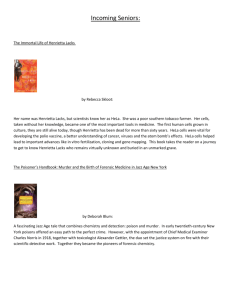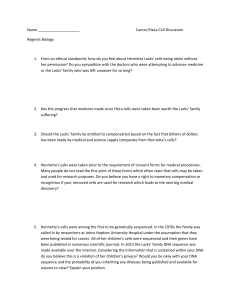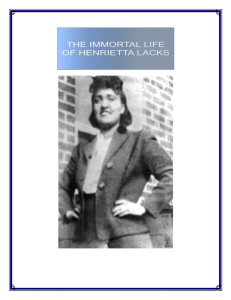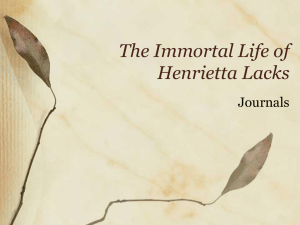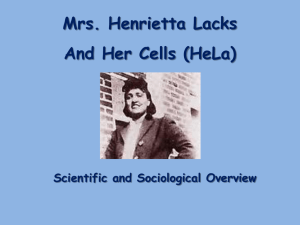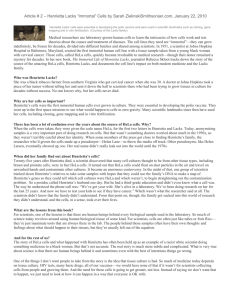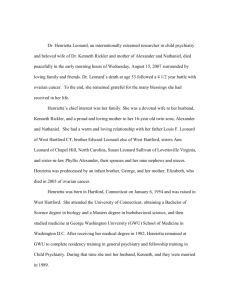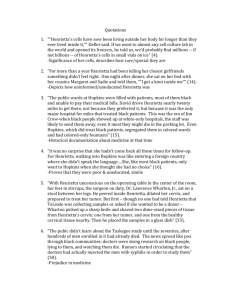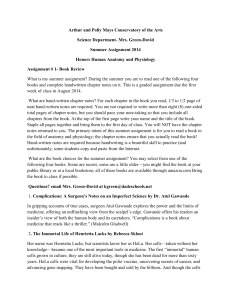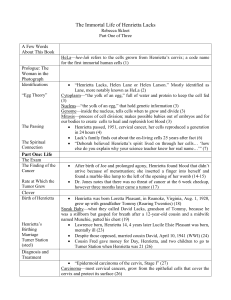The Immortal Life of Henrietta Lacks
advertisement
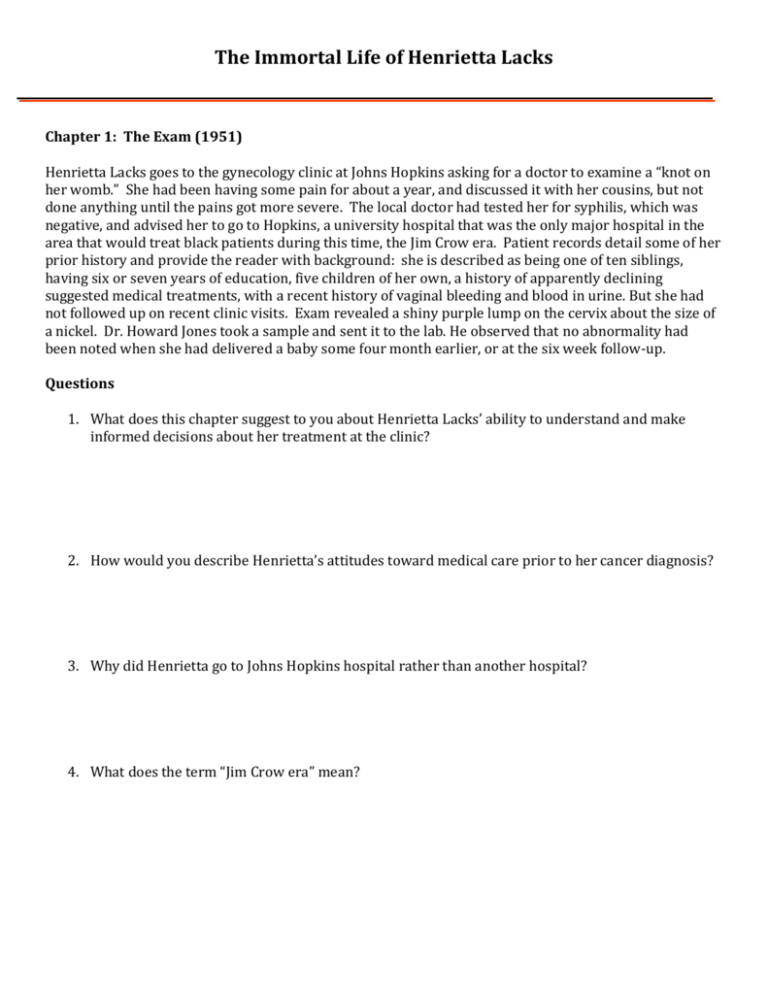
The Immortal Life of Henrietta Lacks Chapter 1: The Exam (1951) Henrietta Lacks goes to the gynecology clinic at Johns Hopkins asking for a doctor to examine a “knot on her womb.” She had been having some pain for about a year, and discussed it with her cousins, but not done anything until the pains got more severe. The local doctor had tested her for syphilis, which was negative, and advised her to go to Hopkins, a university hospital that was the only major hospital in the area that would treat black patients during this time, the Jim Crow era. Patient records detail some of her prior history and provide the reader with background: she is described as being one of ten siblings, having six or seven years of education, five children of her own, a history of apparently declining suggested medical treatments, with a recent history of vaginal bleeding and blood in urine. But she had not followed up on recent clinic visits. Exam revealed a shiny purple lump on the cervix about the size of a nickel. Dr. Howard Jones took a sample and sent it to the lab. He observed that no abnormality had been noted when she had delivered a baby some four month earlier, or at the six week follow-up. Questions 1. What does this chapter suggest to you about Henrietta Lacks’ ability to understand and make informed decisions about her treatment at the clinic? 2. How would you describe Henrietta’s attitudes toward medical care prior to her cancer diagnosis? 3. Why did Henrietta go to Johns Hopkins hospital rather than another hospital? 4. What does the term “Jim Crow era” mean? Chapter 2: Clover (1920 –1942) Henrietta Lacks (born Loretta Pleasant) born August 1, 1920 in Roanoke, Va. After her mother died in 1924, giving birth to her tenth child, her father took the children back to the Clover, Va., where they were split up to live with relatives. Henrietta was sent to live with her grandfather, Tommy Lacks, in the homehouse. Her eight-year old cousin, David (Day), also lived there. Describes what it was like to grow up in this small, tobacco farming community, and relates some stories of Henrietta’s experiences, as told by relatives including her sister, Gladys, and her cousin, Sadie. Henrietta and Day had a son, Lawrence, when Henrietta was 14, and a daughter, Lucile Elsie Pleasant, when she was 18. They married on April 10. 1941. After the US entered World War II, a cousin enticed Day to come work at the Sparrows Point steel mill in Maryland. A few months later Henrietta and the children joined him and moved into housing for African American workers at Turner Station. Questions 1. What do you think of the description of Henrietta’s childhood years in Clover? 2. What is your impression of Henrietta after reading this chapter? 3. What are your thoughts about the employment opportunities for black men at Sparrows Point?
